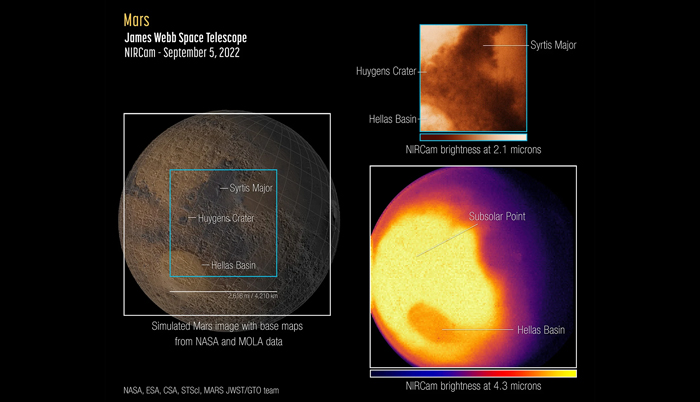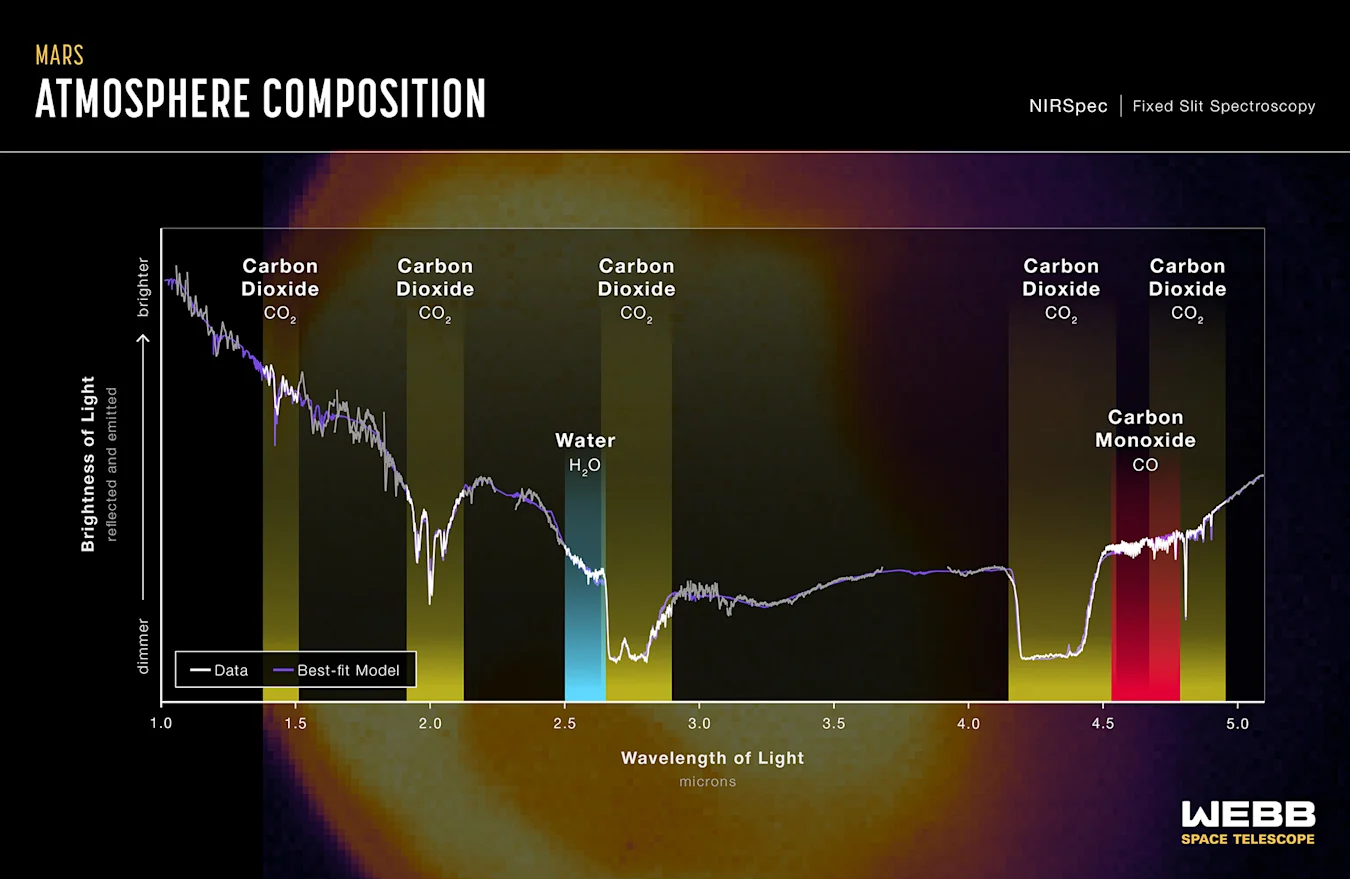![]() Home > Space & Science
Home > Space & Science
James Webb Space Telescope's First Pictures Of Mars Could Reveal More About The Atmosphere

NASA/ESA/CSA/STScI and Mars JWST/GTO team
![]() September 20th, 2022 | 13:31 PM |
September 20th, 2022 | 13:31 PM | ![]() 351 views
351 views
ENGADGET
The images already offer a few surprises.
The James Webb Space Telescope is still snapping its first pictures of Solar System planets, and the latest batch could be particularly useful. NASA and the ESA have shared early images of Mars, taken on September 5th, that promise new insights into the planet's atmosphere. Data from the near-infrared camera (NIRCam) is already offering a few surprises. For starters, the giant Hellas Basin is oddly darker than nearby areas at the hottest time of the day, NASA's Giuliano Liuzzi and Space.com noted — higher air pressure at the basin's lower altitude has suppressed thermal emissions.
The JWST imagery also gave space agencies an opportunity to share Mars' near-infrared atmospheric composition using the telescope's onboard spectrograph array. The spectroscopic 'map' (pictured at middle) shows the planet absorbing carbon dioxide at several different wavelengths, and also shows the presences of carbon monoxide and water. A future research paper will provide more detail about the Martian air's chemistry.

NASA, ESA, CSA, STScI, Mars JWST/GTO team
It was particularly tricky to record the images. Mars is one of the brightest objects the James Webb telescope can see — a problem for an observatory designed to study the most distant objects in the universe. Researchers countered this by capturing very short exposures and using special techniques to analyze the findings.
This is only the initial wave of pictures and data. It will take more observations to reveal more about Mars. However, the spectral info already hints at more information about the planet's materials. Liuzzi also thinks JWST studies could settle disputes over the presence of methane on Mars, potentially signalling that the Red Planet harbored life in its distant past.
Source:
courtesy of ENGADGET
by Jon Fingas
If you have any stories or news that you would like to share with the global online community, please feel free to share it with us by contacting us directly at [email protected]